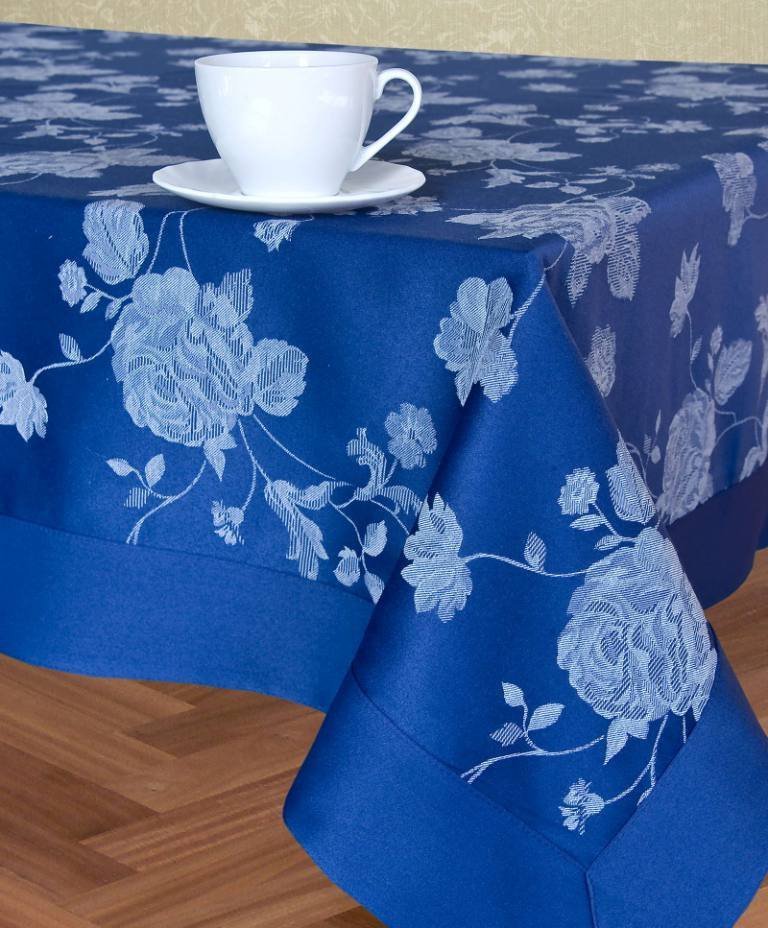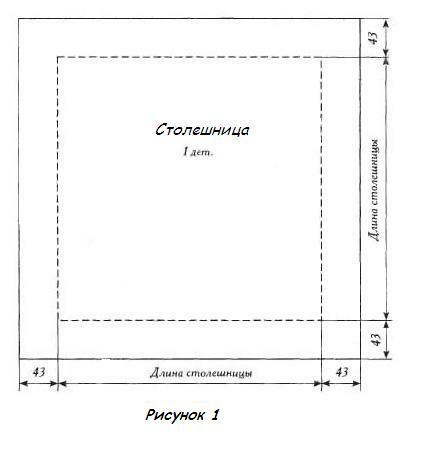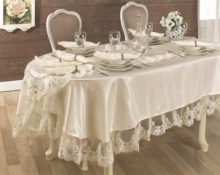 The tablecloth has always been a symbol of prosperity and hospitality. Some people cannot imagine the interior of a home without cozy tablecloths; for some, the hi-tech style, with an abundance of glass or metal, is prettier. But sometimes it is necessary to build a self-assembled tablecloth at home.
The tablecloth has always been a symbol of prosperity and hospitality. Some people cannot imagine the interior of a home without cozy tablecloths; for some, the hi-tech style, with an abundance of glass or metal, is prettier. But sometimes it is necessary to build a self-assembled tablecloth at home.
Table textiles
 Table textiles include:
Table textiles include:
- Tablecloth. It comes in different shapes, sizes, completely covers the table, hangs from the tabletop a few centimeters or right down to the floor.
- Muleton. A piece of fabric placed under the tablecloth prevents slipping and muffles sounds.
- buffet skirt. A long piece of cloth is draped around the sides of the table and goes down to the floor.
- table runner. A long narrow strip of material placed over a tablecloth.
- Towels.
- Napkins.
Necessary materials
We will need:
- Curtain fabric
- Threads to match.
- Long ruler.
- Measuring tape.
- Sewing machine.
- Ironing board.
- Iron.
- Braid, sewing, appliques for decoration as desired.
Calculation of fabric for a tablecloth
We measure the length, then the width of the tabletop. If the table is round, then the diameter.
 We choose how far our tablecloth should extend beyond the tabletop, the so-called overhang.
We choose how far our tablecloth should extend beyond the tabletop, the so-called overhang.
Important! Before cutting any fabric, especially purely natural or mixed fabric, it is necessary to decate it so that it shrinks first. When choosing the length of the overhang, keep in mind that the larger your product, the more difficult it is to care for.
Cut curtain fabric products with your own hands
Cut tablecloths for square and rectangular tables
The pictures show the principles of cutting products of various shapes; it is more difficult to do this work for an oval or sliding table.
 One-piece and machined products are manufactured.
One-piece and machined products are manufactured.
 Stitched models exist if the width of the fabric is smaller than the width of the tabletop, or if we want to sew a model with a large overhang. Frills or draperies are also sewn on separately.
Stitched models exist if the width of the fabric is smaller than the width of the tabletop, or if we want to sew a model with a large overhang. Frills or draperies are also sewn on separately.
Stitched round tablecloth
Corner processing
The most difficult thing when sewing is to carefully handle the corners.
 It is important that they are straight.
It is important that they are straight.

 1st method
1st method
It is recommended to perform the following operations:
- Draw hem lines.
- We fold it at an angle, thus creating a “pocket” of excess fabric. (A)
- We sew, do not touch the excess fabric.
- Trim off excess and iron. (b)
- Turn it inside out.
- Fold in a small seam allowance. (V)
- Let's sew.
- Ironing.
- Repeat with all four corners.
 2nd method
2nd method
Operating procedure:
- We draw hem lines taking into account allowances.
- We bend the corner along the inner line.
- Cut it off, leaving a small allowance of 5 mm.
- We bend the tablecloth corner blank along a bisector, it turns out 45 degrees.
- Bend over the top allowance.
- Let's sew.
- We perform a hem with a closed cut.

- Let's sew.
- Turn it inside out.
- Ironing.
- Repeat with the remaining corners.
Choosing decor

As finishing you can use embroidery, appliques, folds and puffs, hemstitching.
Luxurious decoration – embroidery in different techniques.

 The simplest types of hemstitching shown in the pictures.
The simplest types of hemstitching shown in the pictures.


 Applique easy to make using patterned fabric and double-sided interlining.
Applique easy to make using patterned fabric and double-sided interlining.
 To do this, we cut out a pattern from the curtain along the contour, duplicate it with non-woven fabric and iron it to our product.
To do this, we cut out a pattern from the curtain along the contour, duplicate it with non-woven fabric and iron it to our product.

Advice! Lush ruffles along the contour of the product will help if you don’t get perfect right angles.
By spending one evening and a couple of meters of curtains, we can enliven the interior, add fresh notes to it, and simply lift our spirits!


 0
0





